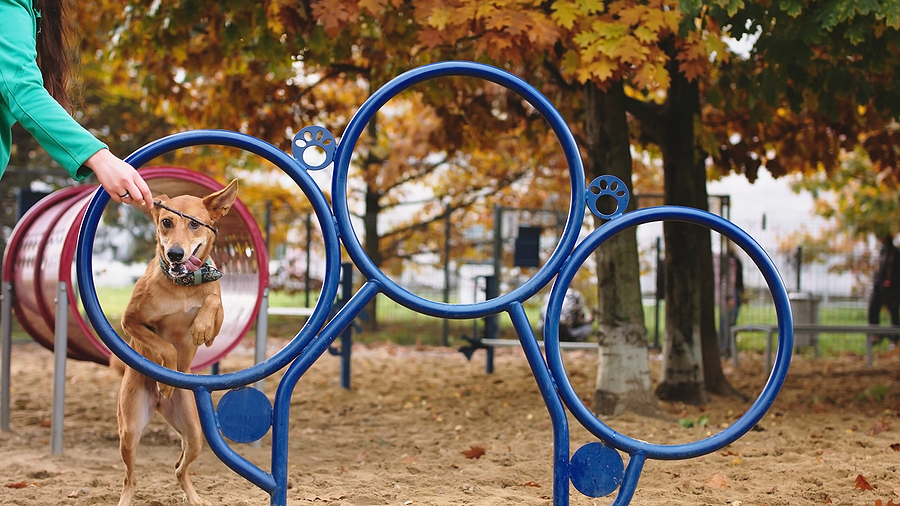When I worked as a professional dog trainer, my dog school was called “Oliver and Me.” Oliver was my dog. But I didn’t just name my school after him because I loved him. He actually helped me train. Doing private training in the suburbs outside of New York City often meant there were no other dogs around. When I wanted to make sure that heeling or a nice, attentive sit-stay would work even with the distraction of another dog nearby, I’d open the door of my car and Oliver would go to work. He might sit next to my student, making a private lesson into a small class. Or I might walk him by. They might heel side by side or I might even play with Oliver while the other dog stayed attentive to his partner. All in all, it made for much more reliable training and meant that the pup I had helped train wouldn’t become totally oblivious if someone else happened to walk by with their dog.
Once I returned to the city, I no longer needed the help of a distraction dog. The environment provided all the distraction anyone could ever ask for! Do you want your dog to pay attention to you when there are other dogs around? No problem. Does your dog need to be blasé crossing a busy street, going into the bank, passing a deli cat out sunning herself on the sidewalk, going past a schoolyard full of children racing around and vocalizing? No problem. You can find and use any distraction you need to make sure you don’t have what used to be called “a backyard champion,” a dog who would do everything perfectly in your living room or yard but not much elsewhere.
Wherever you live, even in a quiet suburb, you can make use of the environment to help check out your dog’s training or to teach him new skills. Because anything you teach your dog will make him a better, faster learner and a more interesting companion, and because it’s simply fun to have a dog with a big vocabulary, you can use a very low fence, a foot or so high, or a low bush to teach your dog “Over.” Most long-legged dogs love to jump. For their shorter cousins, a park bench can be used to teach “Under,” and then at home, when your dog is looking for a missing toy, you can point to your bed, say, and tell him “Under,” the place the toy most likely is waiting to be found.
I teach “Wait” for when the light is red, “Left, Right, and Straight Ahead” when I get to the corner, “Leave it” when a dog approaching us is one I’d rather not have my dog interact with for any of a variety of reasons, including the fact that I am heading to an appointment and don’t have time to stop. And now that people dining at restaurants are eating out of doors more than inside, I also use “Leave it” as we pass between rows of tables covered with delicious food.
The environment can also enable you to help a fearful dog cope with a world he finds scary. He may be a rescue who was poorly socialized or a country dog relocated to a busy city. In either case, you can alternate quiet streets with busy ones and even duck into the bank or hardware store for an even quieter break. Everything around you can be grist for the mill, tools to teach your pup new games, to help him learn to pay attention to you, to teach new words and introduce good habits.
I learned to be on the alert for things to use to teach my dog and things that would increase his fun on a walk. For Oliver, there were ponds everywhere and I’d always leave time between client visits to let him swim. For Ziggy, living in New York City, I look for safe places where he can retrieve and have found many not far from home. I also will use a waist-high fence to work on “Paws Up,” which can turn into “Give Your Paw” (simply put your hand under his paw as he is on the way up) or, if you are more ambitious, “Say Your Prayers,” (once he does “Paws Up,” hold a favorite tidbit of food between his legs from underneath so that he needs to dip his head to get the treat.) Like humans, dogs are lifelong learners and just like us, they take pleasure in learning new things and, hence, knowing the answer to the ubiquitous question, “Who’s a good dog?”
This article was reviewed/edited by board-certified veterinary behaviorist Dr. Kenneth Martin and/or veterinary technician specialist in behavior Debbie Martin, LVT.








